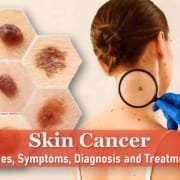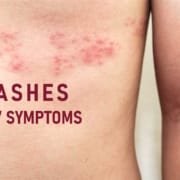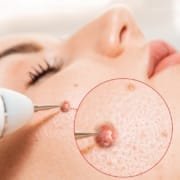How to Remove Henna from Your Skin
Henna, a dye derived from the leaves of the Lawsonia inermis plant, has been used for centuries to create beautiful temporary tattoos, especially in cultural practices such as mehndi. While these designs are cherished for their intricate patterns and rich cultural significance, there are times when you might wish to remove henna from your skin sooner than expected. The dye binds to the skin’s keratin, which can make it challenging to remove quickly and effectively. Here are some techniques to help you remove henna safely and efficiently, ensuring that your skin remains healthy and vibrant.
Effective Methods for Removing Henna
1. Antibacterial Soap and Water
One of the simplest yet effective methods for removing henna is washing the affected area with antibacterial soap. Antibacterial soaps contain higher alcohol content, which can break down the dye molecules more effectively than regular soaps. To use this method, wet the stained area with warm water, apply the antibacterial soap generously, and gently scrub the henna-stained skin. It’s crucial to follow up with a good moisturizer, as this method can strip the skin of its natural oils, leading to dryness. Repeating this process several times can significantly lighten the henna stain.
2. Exfoliating Scrubs
Exfoliating scrubs can be particularly effective for henna removal, especially those containing natural ingredients like apricot or brown sugar. These scrubs help slough off dead skin cells and fade the henna more quickly. Apply the scrub to the stained area and gently massage in circular motions for several minutes before rinsing off. This method not only helps remove the henna but also promotes healthier skin by encouraging cell turnover. Always follow up with a moisturizer to keep the skin hydrated.
3. Micellar Water
Micellar water, known for its gentle cleansing properties, is an excellent option for those with sensitive skin. It effectively pulls the dye from the skin without causing irritation. To use micellar water, soak a cotton pad or washcloth with the solution and gently rub it over the henna-stained area. This method can be used on the face, hands, and other delicate areas, making it versatile for different parts of the body. The hydrating ingredients in many micellar waters also help to soothe the skin after cleansing.
4. Salt Water Soak
Soaking in warm water mixed with salt can aid in the removal of henna by helping to exfoliate the skin naturally. Create a soak by dissolving half a cup of salt in a bathtub filled with warm water and soak for about 20 minutes. The saline solution helps to draw out impurities and can loosen the henna dye from the skin. This method is relaxing and effective, but it’s essential to moisturize afterward to counteract any drying effects from the salt.
5. Baking Soda and Lemon Juice
A potent combination for lightening henna stains is a mixture of baking soda and lemon juice. Baking soda acts as a mild abrasive, while lemon juice is a natural bleaching agent due to its citric acid content. To create this paste, mix half a cup of warm water with one tablespoon of baking soda and two teaspoons of lemon juice. Apply the mixture to the henna-stained area with a cotton swab, allowing it to soak in for several minutes before gently rubbing it away. This method is effective but should be avoided on sensitive skin, especially the face, due to the potential for irritation from the lemon juice.
6. Coconut Oil and Raw Sugar
The combination of coconut oil and raw cane sugar creates a powerful natural exfoliating agent that can help remove henna. The coconut oil nourishes the skin while the sugar helps physically exfoliate the area. To use this method, apply melted coconut oil to the henna stain, allowing it to absorb into the skin. Then, layer raw sugar on top and gently scrub the mixture over the stained area using a loofah or washcloth. This not only helps to remove henna but also leaves the skin feeling soft and moisturized.
7. Whitening Toothpaste
Whitening toothpaste can be surprisingly effective in fading henna stains. Many whitening toothpastes contain hydrogen peroxide and other exfoliating agents that help to break down the dye. Apply a generous amount of whitening toothpaste to the henna stain and let it dry completely. Once dry, use an old toothbrush to gently scrub the area. Rinse off with warm water. This method is best used with caution, as excessive scrubbing can irritate the skin.
8. Hydrogen Peroxide
Hydrogen peroxide is a well-known bleaching agent that can help lighten henna stains over time. For best results, use a diluted cosmetic-grade hydrogen peroxide solution. Apply it generously to the stained area and let it sit for several minutes before rinsing off. You may need to repeat this process several times for optimal results. While effective, be cautious with this method, especially on sensitive skin, as it can lead to irritation if left on for too long.
9. Hair Conditioner
Hair conditioner can also be utilized for henna removal. The moisturizing properties of conditioner help to break down the dye, making it easier to wash away. Apply the conditioner generously to the henna-stained area and allow it to sit for at least 15 minutes. Afterward, rinse off with warm water. This method is gentle and suitable for use on all parts of the body, including sensitive areas like the face and neck.
10. Baby Oil or Olive Oil
Both baby oil and olive oil are effective for loosening henna stains from the skin. To use this method, apply a generous layer of oil to the stained area and let it sit for 10 to 20 minutes. The oil helps dissolve the dye, making it easier to wipe away. After allowing it to sit, gently scrub the area with a washcloth before rinsing off. This method is non-irritating and can be used on sensitive skin.
11. Swimming in Chlorinated Water
Spending time in a chlorinated pool can help to fade henna stains. The chlorine in the water acts as a chemical exfoliant, breaking down the dye more quickly. To use this method, swim in a pool for about 40 minutes. The combination of water and chlorine can significantly lighten the henna, and you get the added benefit of exercise! Remember to rinse off afterward to remove any chlorine residue.
12. Shaving
Shaving can act as a mechanical exfoliation technique, helping to remove the upper layers of skin where the henna dye has settled. When using this method, ensure that you use a clean, sharp razor and shave gently without applying too much pressure. This method is more suitable for areas where the skin is less sensitive, like the legs or arms, and should be avoided on the face unless you’re accustomed to shaving that area.
Frequently Asked Questions (FAQs)
How long does henna typically last on the skin?
Henna designs generally last from one to three weeks, depending on factors such as skin type, location of the tattoo, and aftercare.
Are there any allergic reactions associated with henna?
While henna is considered safe for most people, some individuals may experience allergic reactions, particularly with black henna, which can contain added chemicals. Always perform a patch test before applying henna extensively.
Can henna be removed immediately?
There is no guaranteed method for immediate removal of henna. However, the techniques mentioned above can help speed up the fading process effectively.
Is it safe to use chemical products for henna removal?
When using chemical products like hydrogen peroxide or certain exfoliants, always perform a patch test to avoid skin irritation, especially on sensitive skin.
The Final Takeaway
Removing henna from the skin can be a time-consuming process due to its long-lasting properties. While there is no method that guarantees instant removal, the techniques outlined in this article can significantly expedite the fading process. By employing a combination of physical exfoliation and chemical agents, you can help your skin shed the henna more effectively. Always remember to moisturize your skin after attempting these methods to maintain hydration and prevent dryness.










